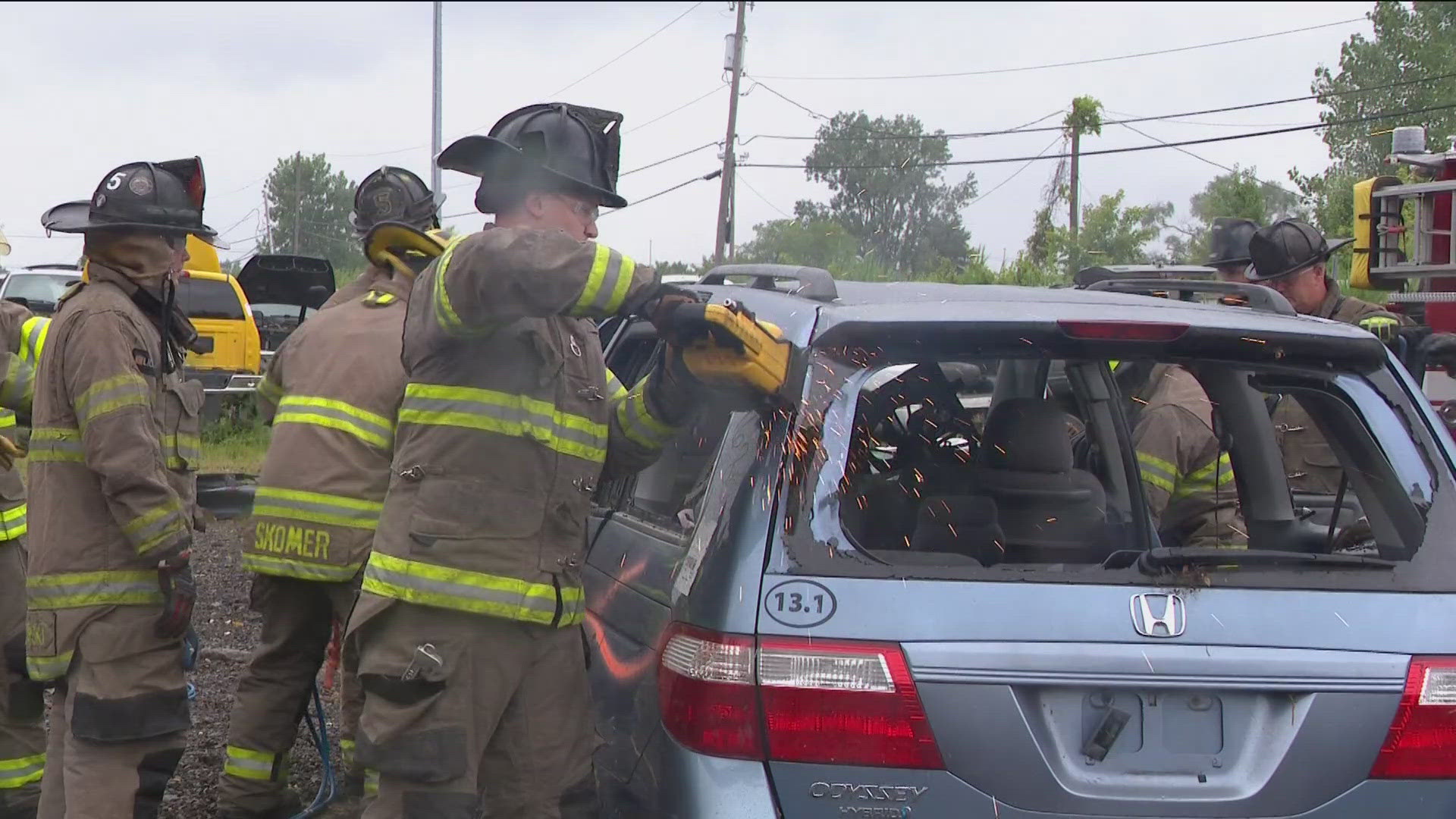TOLEDO, Ohio — A new partnership is allowing members of the Toledo Fire & Rescue Department to train for rescues from electric vehicles more often.
The owners of the U-Pull R-Parts salvage yard in north Toledo Now are offering their property and vehicles to the department for practice.
"It gives them an opportunity to actually get live training exercises, to get acclimated to their tools, to how it's going to operate in the field," said site manager James Siebert. "Essentially it's an opportunity to save somebody's life."
TFRD Lt. Kevin Ohrt said the partnership allows crews to test out state-of-the-art equipment, specifically with electric vehicles.
Ohrt said the vehicles create new challenges.
"It has posed a whole new way that we need to extricate people," he said. "Even on a simple car fire, the toxins that are put out with it, the battery packs."
Auto industry data and insight tracker Experian says more than 3.3 million electric cars are on the roads in the U.S. And, the National Transportation Safety Board confirms that the new vehicles and lithium-ion batteries can pose threats to first responders, specifically electric shock.
"There are certain cables that we can and can't cut on these vehicles," Ohrt said. "Teaching the crews where to look for the cables, what we can and can't cut for their safety alone."
EVs are involved in fewer fires than their gas-powered predecessors, according to NTSB data cited by Kelly Blue Book. 25 EVs are involved in fires for every 100,000 sold, compared to 1,530 gas-powered vehicles and 3,475 hybrids for every 100,000 of each type sold.
Siebert says working with TFRD pays off as a member of the community.
"There's a lot of people that talk," Siebert said. "They can say a lot of negative things about Toledo. But a lot of people aren't doing anything to change that."
Siebert's attitude and TFRD's additional training help change the way the department's staff save lives, Ohrt said.
The lieutenant said two crews were training on Monday.
"Once they were released from the scene here, they had an extrication,” Ohrt said. "They were able to quickly extricate the person out of the vehicle within a 12–15-minute time frame."
Ohrt said TFRD previously trained about once every six months. Now, the department is able to train monthly since working with the salvage yard.

